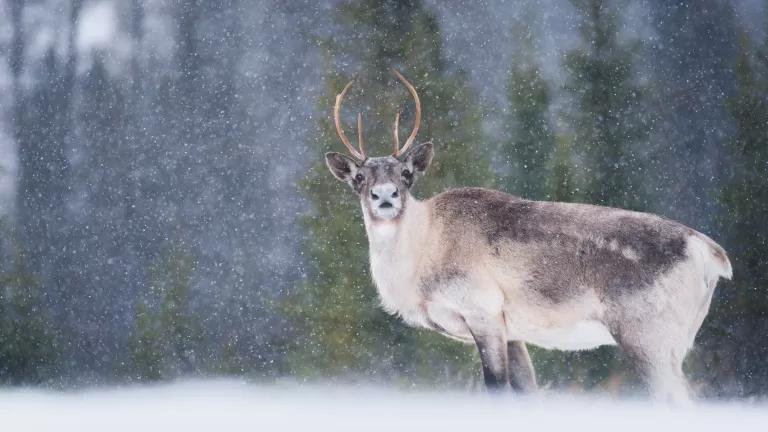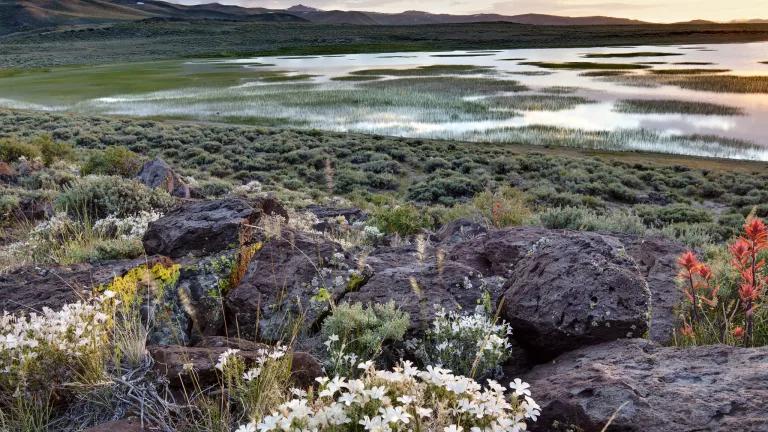
Southeastern Utah is one of the most remarkable places in the United States. Its vast red-rock landscape seems to go on forever. I was lucky to recently spend three days under the Bears Ears, named for twin buttes that poke up from the landscape and look like, well, the ears of a bear. I pitched my backpacking tent among dozens of others — and a couple of teepees, too — in a meadow surrounded by a beautiful ponderosa pine forest, right in the shadow of Bears Ears.
The first night, a full moon illuminated my steps back to my tent after dinner and conversation with the Navajo, Hopi, Zuni and Ute tribes who—like the rest of us—had gathered in the meadow to support the area’s protection. The next day, I would follow them on the 90-minute drive to the town of Bluff, where Interior Secretary Sally Jewell had come to hear comments from the public on the proposed Bears Ears National Monument.
More than 1,400 people poured into Bluff (population: 300) for the July 15 hearing — a testament to Utah residents’ eagerness to protect the region. Time was too short to hear everyone. So speakers chosen by lottery spoke, one after another, of what the surrounding landscape meant to them. Navajo President Russell Begaye called the Bears Ears area a “place of healing and spirituality” and said that “Navajos relate to the Bears Ears area as other people relate to their relatives.” A San Juan County resident spoke of how she valued the freedom to use the land as she chose, just as her family had done for generations.
Everyone who spoke shared a passion for the land and a desire to protect it. The question for Secretary Jewell is how to do that.
One option — the Public Lands Initiative, a bill introduced by Representative Rob Bishop (R-Utah) — has been presented as a compromise in the intense debates over how to use Utah’s wilderness. The reality, however, is that energy development and motorized use would win and wilderness would lose out under Bishop’s plan. The bill fails to protect 62 percent of the land citizens have proposed for wilderness. And the bill’s “National Conservation Areas” would allow numerous uses, like grazing and road-building, that few would call conservation. Finally, when it comes to Bears Ears itself, the bill protects only a small piece of the landscape, exposing the area’s natural and cultural resources to further destruction.
The better option—designation as a National Monument by President Obama under the Antiquities Act — offers immediate and lasting protection for 1.9 million acres of naturally rich and culturally important tribal lands. The monument proposal, developed by the Bears Ears Inter-Tribal Coalition, protects existing uses but prevents future destruction. It offers a powerful new model for managing our public lands: tapping into the wisdom and experience of Native Americans to preserve the land for future generations as they have struggled to preserve it in the past. Access to the land for a variety of uses won’t end with monument designation; neither will public comment. Most importantly, Native Americans will have a say in the preservation and management of the land.
Secretary Jewel has said she sleeps better when her decisions protect places for tomorrow—not just today. A national monument designation will do that for Bears Ears. Bishop’s Public Lands Initiative will not.



